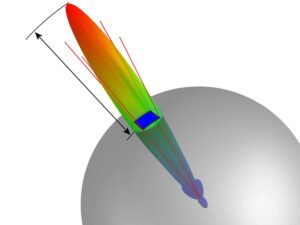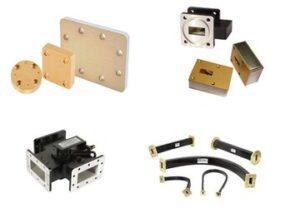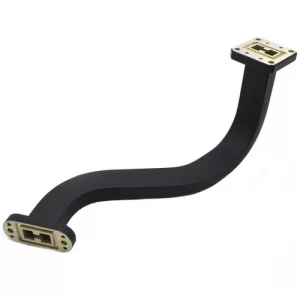Table of Contents
Structure and Mode of Operation
Waveguides and two-wire transmission lines, such as coaxial cables, are fundamentally different in how they carry electromagnetic waves. Two-wire transmission lines typically include two conductors, which are often made of copper, insulated from one another, and able to carry a signal of many frequencies usually up to a few gigahertz. For example, the standard RG-58 coaxial cable will effectively carry frequencies up to about 2 GHz before the amplitude becomes prohibitively low Cablek online wire and cable manufacturer . Waveguides are hollow metal structures, without a central conductor, that efficiently carry signals at much higher frequencies.
Waveguides are particularly effectively used at the range of more than 1 GHz, and they can efficiently operate even at the terahertz range. The dimensions of a rectangular waveguide are chosen to carry signal at the minimum frequency, meaning the waveguide is most efficiently transferring energy as a wave. The WR-90 waveguide, which has dimensions that are most effective at about 10 GHz, is particularly common Antennas for all . For example, waveguides are extensively used to transport energy from a magnetron, an electric generator utilized in microwave ovens, to the cooking chamber, where the energy is appropriately transferred to the food. In the same way, waveguides are used in radar to transfer energy from the magnetron to the antenna.
At these frequencies, inexpensive two-wire transmission lines are no longer nearly as effective; even at 2GHz two-wire lines, in a typical application, would have to be replaced at a rate of 0.2dB by one meter of length, while at 10 GHz, a typically waveguide, they might only be replaced at the rate of 0.1 dB by one meter of length section . The comparative expense of the two transmitting systems correlates to their relative efficiency and frequencies; at 200 units, the waveguide system will be several thousand dollars to set up between installation costs and the higher unit cost of the waveguide. The waveguide is also far more difficult to manufacture with precision in part due to its higher frequency and effective operation range.
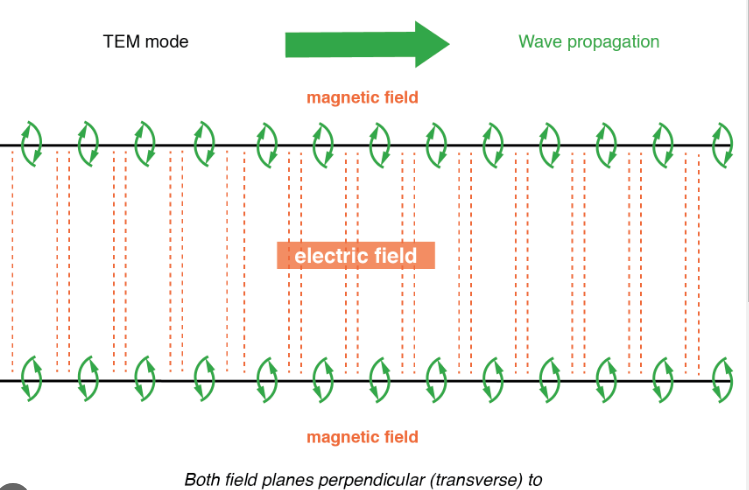
Frequency Range
The operating frequency ranges of both waveguides and two-wire transmission lines, such as coaxial cables, define their particular use and efficiency in various applications. Two-wire transmission lines are effective over a broad range of frequencies, from a few kilohertz up to several gigahertz. For example, common RG-6 coaxial cable is used in residential applications for internet and cable TV, among other utilities. Such a piece of equipment has reasonably satisfactory results transmitting signals of up to about 3 GHz effectively, since losses due to the skin effect and the dielectric become too high past that.
Waveguides are typically used over much higher frequency ranges, from 1 GHz up to the terahertz range. This makes them an indispensable tool in satellite communications and aerospace radar applications. On the other hand, the cutoff frequency of a given design specifies the lowest frequency a given waveguide can swallow efficiently. Below that, the waveguide does not even support the propagation of electromagnetic waves. A typical massive X-band waveguide, labeled WR-90, is considered to work at frequencies ranging from 8.2 to 12.4 GHz . This works well for radar and communication satellites, where high-frequency transmission and minimal signal loss are valued highly.
For example, the losses in RG-6 coaxial cable can be up to about 15 dB per 100 meters at 2 GHz, which is a serious drawback if the clarity and strength of the signal are essential . In a rectangular waveguide made of aluminum, losses are as severe as 0.25 dB per 100 meters at 10 GHz.
Power Handling and Losses
Waveguides differ considerably from two-wire coaxial cables in their ability to handle power and the frequency at which this power can be lost. Waveguides generally have vastly superior power handling capabilities, with a standard rectangular waveguide, for example, being able to transmit several kilowatts of power safely without any real losses of power . This makes waveguides by far the most suitable transmission medium for applications in which relatively high amounts of power need to be transmitted, such as in weather radar installations, in which a large amount of power is required to be able to penetrate the atmospheric conditions which must be measured.
Coaxial cables are generally much poorer in this regard, with a standard RG-213 only rated even up to lower frequencies at a power input of some two kilowatts of power, and considerably fewer at higher frequencies due to a rapidly increasing skin effect and capacitative dielectric heating loss . This means that coaxial cables are less suitable for even lower frequency, high power applications than waveguides. When concerned with losses, coaxial cables may experience an attenuation rate up to 6.8 decibels per hundred meters of RG-213 at 500 MHz, a significant decrease over long distances, while waveguides may experience an attenuation rate as low as 0.1 dB/m for a standard aluminum rectangular waveguide at frequencies around 10 GHz .
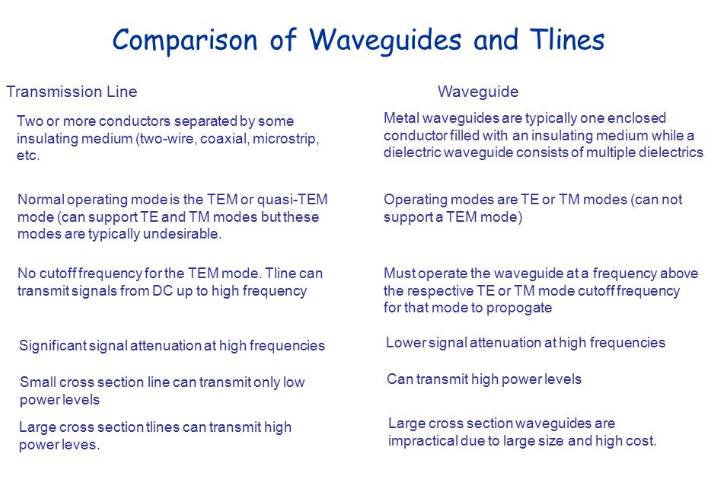
Applications
Technological solutions often find themselves in radically different conditions based on their operating principles, and waveguides as compared to two-wire transmission lines such as coaxial cables are no exception. Coaxial cables are used in all possible applications for integrated technology use to meet the everyday needs of modern people. A popular example of coaxial cable utility is in residential broadband systems, in which RG-6 cables connect television, internet, and telephone services. The cable is designed to support the maximum required frequency ranges up to 3 GHz, which is enough for these purposes. This is a viable solution that is also affordable in the vast majority of needs within a home or a workplace, often requiring relatively short cables to cover the necessary distance.
Waveguides are available to use exclusively in highly specialized areas in which microwave frequencies and above are used. Their high-frequency capabilities make them valuable in the field of radar technology, in which waveguides support large amounts of high-frequency signals for radar devices for air traffic control or weather monitoring services . For example, the airport surveillance radar operates at 2.7-2.9 GHz, and the weather radar operates at 5.6 GHz . Waveguides are more often appreciated in high-frequency satellite communication applications, in which they are used to create a process through which high-frequency antennas are connected to the transceiver. The MinXSS CubeSats system transmits high-frequency signals of up to 10 GHz. The refinement and build-out of these systems that use waveguides are very expensive, but there is currently no better solution for this technological demand. It is worth planning to invest in highly advanced physical systems because only these systems have the potential to provide solutions that are highly advantageous for satellite communications. A similar situation may also occur in scientific areas, such as in the use of waveguides in particle accelerators and plasma research. In any case, the use of high-power microwave energy requires surgical precision through high-quality guides under makeshift conditions.


